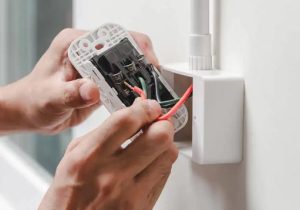Decoding the Panel Color Code
In the world of electronics and electrical systems, color coding plays a critical role in ensuring safety, efficiency, and ease of maintenance. Just like the well-known resistor color code, there’s a color scheme for wiring and components that experts and novices alike must navigate. This guide dives into the panel color code, a standardized system that helps identify the function of each wire in a panel, preventing errors and accidents during installation and troubleshooting.

Understanding the Basics
The foundation of the panel color code lies in its ability to convey complex information quickly and accurately through color differentiation. Here's a breakdown of the most commonly used colors and what they represent:
- Black and Red Wires: These colors usually indicate power wires. Black is often used for the "hot" or live wire, carrying power to the circuit, while red may denote a secondary live wire in 220-volt installations or switch legs.
- White and Gray: Traditionally, white and gray represent neutral wires, which complete the electrical circuit by returning the current to the power source. In specific configurations, white may also be used to indicate a hot wire, so context and additional markings are key.
- Green and Green with Yellow Stripe: These colors are universally recognized as grounding wires. They provide a path for electrical current to safely ground in the event of a short circuit, reducing the risk of electrical shock or fire.
- Blue and Yellow: In control panels and electrical systems, blue often signifies a control circuit or pilot light, whereas yellow indicates a wire that's live or powered when the control circuit is activated.
Safety First
The significance of adhering to the panel color code cannot be overstated. Incorrect wiring can lead to equipment damage, electrical shock, and even fire. Always consult the National Electrical Code (NEC) or your local building codes for the most current standards and practices, as these can vary by jurisdiction and evolve over time.
Best Practices for Decoding
- Always Turn Off Power: Before working on any panel, ensure all power sources are safely disconnected to prevent accidents.
- Use Proper Tools: Equip yourself with a multimeter to verify the presence or absence of electrical current, further ensuring safety and accuracy in your work.
- Refer to Documentation: When available, always check the schematic diagrams or installation manuals for the specific equipment you're working with. These documents can provide critical information beyond the basic color code, especially for complex or custom configurations.
Panel color code serves as an essential guide for electricians, technicians, and DIY enthusiasts, facilitating safe and effective electrical installations and maintenance. By familiarizing yourself with these color conventions, you enhance your ability to navigate the electrical landscapes of various devices and systems, ensuring that your projects not only function correctly but are also up to code and safe for users. Whether you’re laying out a new installation or troubleshooting an existing one, a solid grasp of the color code is indispensable.